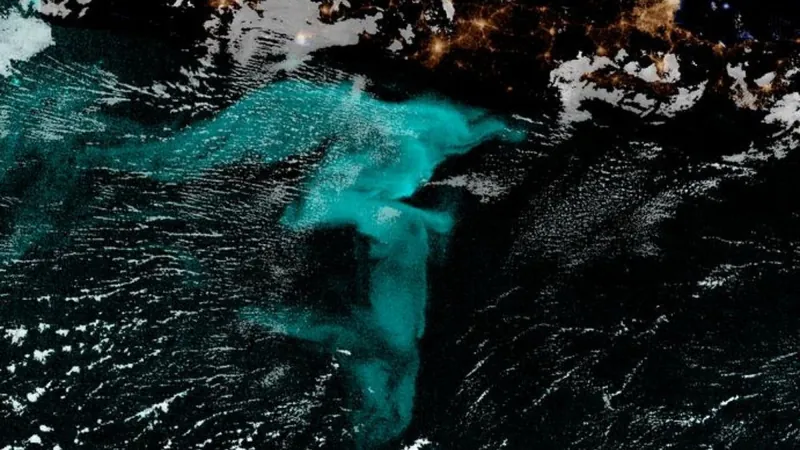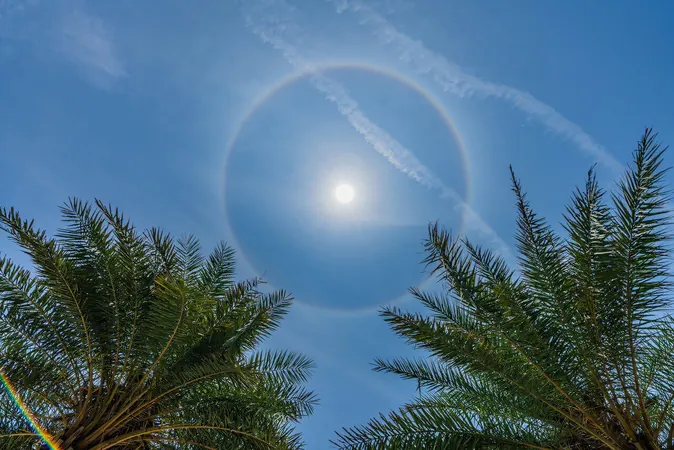
Unraveling the Mystery of Milky Seas: A Glowing Enigma of the Ocean
2025-04-16
Author: Liam
What Are Milky Seas?
Imagine sailing the open ocean and witnessing a sight so surreal it feels like a dream—a sprawling expanse of glowing water, described by a sailor in 1854 as "the whole appearance of the ocean was like a plane covered with snow." This phenomenon, now known as milky seas, has puzzled sailors for centuries, evoking awe and fear alike.
The Science Behind the Glow
Today, we understand that this enchanting glow comes from bioluminescence, triggered by chemical reactions in living organisms. But the science of milky seas remains largely unexplored. To deepen our understanding, researchers at Colorado State University (CSU) have created a groundbreaking database that merges eyewitness accounts from sailors dating back 400 years with modern satellite observations.
Professor Steven Miller, a co-author of the study, emphasizes the significance of these glowing seas: "Their existence highlights unexplored connections between our environment and the Earth’s extensive biosphere. This new database serves as a bridge from ancient tales to contemporary scientific inquiry."
What Causes the Phenomenon?
Milky seas can range from snow white to brilliant green or turquoise, often stretching over 100,000 square kilometers and persisting for weeks at a time. Unlike other forms of marine bioluminescence, such as the random flashes of bioluminescent plankton, milky seas provide a steady, mesmerizing glow, easily visible from space.
The culprit behind this radiant display is likely a luminous bacterium known as *Vibrio harveyi*, which was discovered inhabiting algae during a 1985 research expedition. However, due to their elusive nature and occurrence primarily in remote locations, gathering concrete data has proven challenging.
Climate Connections and Ecosystem Implications
Recent findings indicate that milky sea sightings are most common in the Arabian Sea and Southeast Asian waters, suggesting a correlation with significant climate patterns such as the Indian Ocean Dipole and El Niño Southern Oscillation. Researchers are eager to explore how these phenomena might influence or be influenced by milky seas.
Hudson adds, "Regions with active milky seas hold great biological diversity and are crucial to local fishing economies, making it essential to understand their ecological impact. We are still uncovering the role these glowing expanses play within their ecosystems, which could indicate either health or distress.
The Path Ahead
Miller reflects on the implications of this research: "By compiling this data, we can shift our study of milky seas from mere chance encounters to a systematic exploration of their causes and effects. The mysteries of these glowing waters might just hold the key to understanding broader ecological dynamics and the role of bacteria in our global climate system."
Join us as the world of science ventures into the depths of the ocean to uncover the secrets of milky seas—who knows what we might discover next?









 Brasil (PT)
Brasil (PT)
 Canada (EN)
Canada (EN)
 Chile (ES)
Chile (ES)
 Česko (CS)
Česko (CS)
 대한민국 (KO)
대한민국 (KO)
 España (ES)
España (ES)
 France (FR)
France (FR)
 Hong Kong (EN)
Hong Kong (EN)
 Italia (IT)
Italia (IT)
 日本 (JA)
日本 (JA)
 Magyarország (HU)
Magyarország (HU)
 Norge (NO)
Norge (NO)
 Polska (PL)
Polska (PL)
 Schweiz (DE)
Schweiz (DE)
 Singapore (EN)
Singapore (EN)
 Sverige (SV)
Sverige (SV)
 Suomi (FI)
Suomi (FI)
 Türkiye (TR)
Türkiye (TR)
 الإمارات العربية المتحدة (AR)
الإمارات العربية المتحدة (AR)